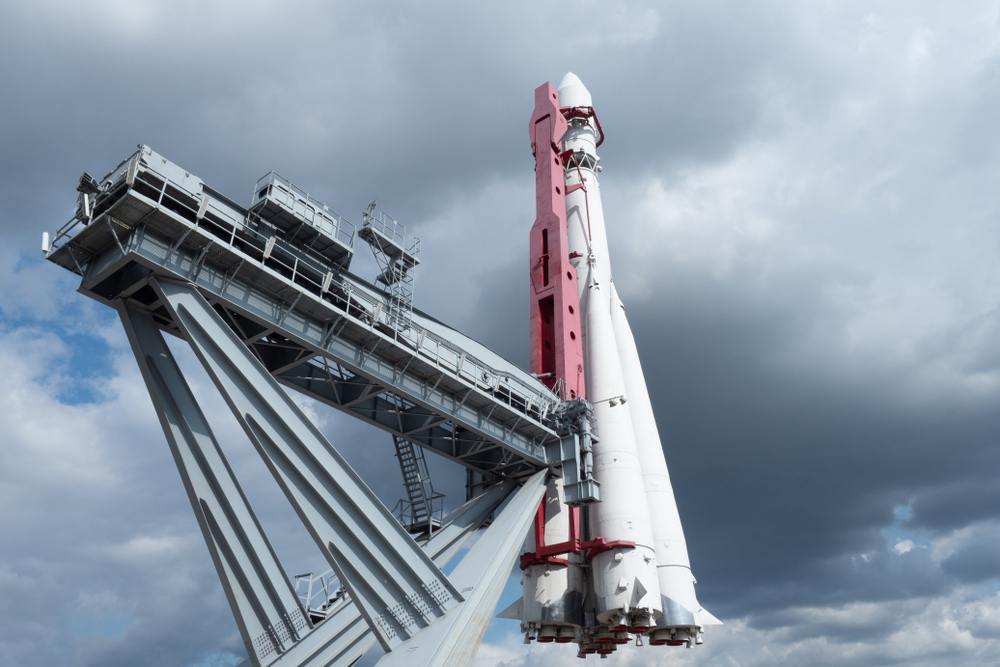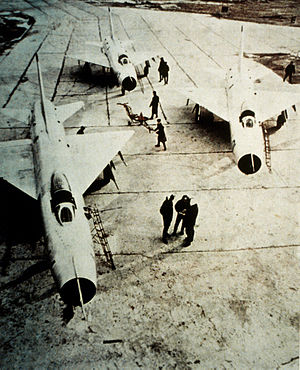
Tshiab spaceport, foob pob ua ntxaij tshiab
Txheem
Chang Zheng-201 version 7 launch tsheb tau tawm ntawm Launch Complex LC340 ntawm Wenchang Satellite Launch Center ntawm Hainan Island.
Thaum Lub Rau Hli 25, 2016 ntawm 12: 00: 07,413: 20 UTC (00: 201 Tuam Tshoj lub sijhawm), Chang Zheng-7 Version 340 tso lub tsheb nqa tawm ntawm LCXNUMX Launch Complex ntawm Wenchang Satellite Launch Center ntawm Hainan Island.
Rau cov Suav, nws yog ib qho kev tshaj tawm - tsis tsuas yog nws tau nthuav tawm lub cosmodrome tshiab thiab lub foob pob hluav taws tshiab, ib puag ncig tus phooj ywg, tab sis nws kuj tau sim ntau cov thev naus laus zis, cov tswv yim thiab cov cuab yeej siv rau cov kev xav tau ntawm Celestial Empire qhov kev pab cuam qhov chaw, suav nrog. qauv ntawm lub alarm ntawm lub neej yav tom ntej spacecraft, uas tau ntse xa mus rau lub ntiaj teb no yog cov lus teb rau lub American Orion los yog Lavxias teb sab Federation.
Cov chaw nres nkoj uas twb muaj lawm
Thaum PRC muaj peb qhov chaw nres nkoj, hais txog tus lej qhov no tso nws nyob rau hauv pem hauv ntej ntawm lub ntiaj teb, tib tus lej hauv Russia, thiab ib qho ntxiv hauv Tebchaws Meskas. Qhov teeb meem no me ntsis zuj zus nyob rau hauv cov nqe lus ntawm tag nrho cov active launchers, tab sis lawv cov xov tooj zoo nkaus li txaus rau cov kev xav tau tam sim no. Thawj qhov chaw nres nkoj Suav yog JSLC, i.e. Jiuquan Satellite Launch Center (txawm hais tias lub npe no tsis tau paub ntau xyoo vim nws yog qhov chaw sim foob pob hluav taws zais cia ua haujlwm txij li xyoo 1958), nyob hauv Gansu Xeev hauv Gobi Desert, kwv yees li 1600 km deb. los ntawm Beijing. Nws qhov chaw debut tshwm sim nyob rau hauv 1970, thaum cov neeg koom pheej ntawm Tuam Tshoj los ua lub thib tsib lub teb chaws (tom qab lub USSR, lub teb chaws USA, Fabkis thiab Nyiv) kom paub qhov nyuaj kos duab ntawm qhov chaw ya davhlau. CZ-1 (Chang Zheng, chi. Lub Peb Hlis Ntuj), FB-1 (Feng Bao, chi. Cua daj) tau tsim cov cuaj luaj los ntawm qhov chaw, thiab tam sim no ntau yam qauv ntawm CZ-2, suav nrog CZ-2F nrog Shenzhou thiab CZ manned nkoj - 4. Los ntawm nws, satellites tau tso rau hauv qis orbits nrog inclinations nyob rau hauv thaj tsam ntawm 41-70 °.
Thawj qhov tshaj tawm ntawm XSLC qhov chaw foob pob hluav taws los ntawm Xichang Satellite Launch Center hauv Sichuan Province tau tshwm sim xyoo 1984. Lub cosmodrome yog tsom rau kev tua cov foob pob hluav taws rau kev hloov mus rau geostationary orbits, yog li ntawd feem ntau yog kev sib txuas lus thiab kev siv huab cua, nrog rau kev tshawb fawb satellites thiab lunar probes. . Tag nrho cov qauv ntawm CZ-3 hom tau siv ntawm no, nrog rau CZ-2C thiab CZ-2E.
Qhov chaw nres nkoj Suav kawg uas twb muaj lawm yog TSLC, lossis Taiyuan Satellite Launch Center. Nyob rau hauv xeev Shanxi, nws pib nws qhov chaw ua haujlwm hauv xyoo 1988. Lub cosmodrome muaj ntau yam me me ntawm kev tso tawm azimuths, uas tso cai rau nws nkag mus tsuas yog lub voj voog ncig. Yog li ntawd, yuav luag tsuas yog lub ntiaj teb soj ntsuam satellites tau pib los ntawm no siv CZ-4 foob pob hluav taws, thiab xyoo tas los lub tsheb tshiab CZ-6 tau tsim tawm. Qhov kawg, txawm li cas los xij, belongs rau tiam tshiab ntawm missiles.
Cov missiles tam sim no
Txog niaj hnub no, Tuam Tshoj tau siv ntau lub kaum os cov qauv ntawm cov kua roj foob pob hluav taws, uas muaj plaub hom tseem ceeb (CZ-1...CZ-4), txhawm rau xa cov satellites rau hauv lub voj voog. Kuv txhob txwm tshaj tawm cov qauv tsim raws li cov khoom siv foob pob hluav taws (Kaituozhe, Kuaizhou lossis CZ-11), vim tias cov no yog cov foob pob hluav taws uas tsuas tau ya ib zaug lossis ob zaug kom deb li deb thiab lawv txoj hmoo tsis paub meej, qhov no yog ib ceg tuag ntawm Suav foob pob hluav taws tiv thaiv. .
Txawm hais tias qhov loj thiab qhov hnyav, tus naj npawb ntawm cov theem thiab lub cav siv, tag nrho cov kua roj foob foob pob hluav taws, lossis lawv thawj theem, yog muab los ntawm ob hom kev sib ntaus sib tua ballistic missiles DF-3 (Dongfeng-3, CSS-2) lossis DF. . -5 (Donfeng-5, US-4). Lawv yog cov yam ntxwv los ntawm kev siv tus kheej-exciting hypergol sib tov ua roj. Unsymmetrical dimethylhydrazine (feem ntau paub los ntawm nws cov lus Askiv acronym UDMH) ua roj thiab dinitrogen tetroxide (yav tas los nitrogen tetroxide, N2O4) raws li oxidizer powered lub cav tsis yog tsuas yog Lavxias teb sab Protons, American Titans lossis Deltas, tab sis kuj tag nrho Chang Zheng tsev neeg. Nws yuav tsum tau hais tias ob qho tib si yog qhov txaus ntshai tsis yog rau tib neeg nkaus xwb, tab sis kuj rau ib puag ncig.
CZ foob pob hluav taws hais txog qhov yuav tsum tau them ntawm 1009200 502200 25005000 kg rau lub ntiaj teb qis orbit, tom qab 6,5 8 kg rau lub hnub-synchronous orbit, mus txog 3 2 2,3 kg rau kev hloov mus rau geostationary orbit. Twb tau ntau xyoo dhau los, qhov tsis muaj cov cab kuj hnyav rau loj geostationary satellites lossis spacecraft tau pom tseeb. Tam sim no, lawv cov huab hwm coj feem ntau tshaj 20 tons, thiab muaj peev xwm ua kom lawv nce mus txog XNUMX tons, thiab qhov siab tshaj plaws ntawm lub satellite xa mus rau geostationary orbit siv CZ-XNUMXB / GXNUMX qauv tsis pub tshaj XNUMX tons. chaw nres tsheb uas yuav hnyav txog XNUMX tons.
